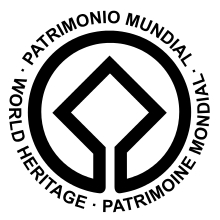yellowstone
a nature paradise
a nature paradise
The park of our dreams
A little bit of history
The first national park in the world spreads over parts of the states of Wyoming, Montana and Idaho. It was signed into law on March 1, 1872 by President Ulysses S. Grant, but Native Americans have lived in the region for at least 11,000 years. It was designated an International Biosphere Reserve on October 16, 1976 and is part of UNESCO World Heritage since September 8, 1978. It includes lakes, canyons, rivers and mountain ranges. Yellowstone Lake is centered over the Yellowstone Caldera, the largest supervolcano on the continent.In its 8,983 km2 more than 1,800 archeological sites have already been examined by experts, most from the Archaic period (7,000 to 1,500 years ago). From that prehistoric or paleoindian presence there is evidence that men hunted bison, sheep, elk, deer, bears, cats and wolves. Artefacts are found such as vessels, stone knives and spearheads. Historic peoples like the Crow, the Sioux, later also Salish, Kiowa and Shoshone arrived from 700 years ago, but there are only few traces. The Sheep Eaters or Tukudika were one of the most important Shoshone tribes living in Yellowstone, but 25 other tribes lived around here or moved through Yellowstone on their trekkings.
Clothes and utensils of Native Americans in a small exhibition
in the Moose Visitor Center (Grand Teton NP)
Late in the 1700's the first European traders traveled up the rivers in the region to find Native Americans with which they could trade. Many of them were French trappers, which called the river 'Roche jaune'. From 1800 onwards, the area was progressively explored by different groups of Europeans. Official expeditions, often assisted by locals of Indian or European descent that had already settled here (see Jenny lake), put Yellowstone and its resources definitively on the map in 1869, 1870 and 1871.
Wildlife and many geothermal features as well as the various ecosystems form the unparalleled richness of Yellowstone. Hundreds of species of mammals, birds, fish, reptiles and invertebrates have been documented as living in its forests and grasslands where unique species of plants offer them an ideal habitat. Unfortunately due to man's destructive actions, many of those animals are now either endangered or threatened species. and in 1988 nearly one third of the park was burnt, mainly by small fires which spread in various directions.
Fire has always been a shaping factor of nature, especially in an area with geothermal activity. Certain plant and tree species have adapted in such a way that they may even need fire at some time of their life cycle to germinate, flourish, and rejuvenate. Small fires help create a diversity of vegetations of different ages and are thus a positive factor for biodiversity. Each year several fires occur in Yellowstone, mostly from mid-June to September, caused by lightning, by careless smokers etc. Most fires don't destroy more than 40 hectares and several don't even need human intervention to go out. The largest fires in recent times were those of 1988, when 9 fires caused by humans and 42 caused by lightning affected 36% of the parks' acreage.
The park was placed on the List of World Heritage in Danger from 1995 to 2003 due to the effects of tourism, infection of wildlife, and issues with invasive species.
Soldiers and Park Rangers, Indians and poachers
The very 'owners' of the area (who themselves never considered the idea that man can 'own' the land), the Native American tribes, have been cast from their home dwellings. During the 1870s and 1880s they were effectively excluded and the last small bands of Eastern Shoshones known as 'Sheep Eaters' left the area under the assurances of a treaty negotiated with the US government under which they ceded their lands but retained the right to hunt in Yellowstone. This treaty was never ratified by the US and the Sheep Eaters nor any other tribe that had made use of Yellowstone had their claims accepted.The tension kept on going as poaching and destruction of natural resources continued and in 1878 a group of Bannock Shoshones entered the park, causing alarm to Superintendent Philetus Norris who built a fort for the purpose of preventing Native Americans from entering the national park after the Sheep Eater Indian War of 1879.
In 1900 the Lacey Act made it legal for officials to prosecute poachers. In 1916 the National Park Service was created and finally in October 1918 the army turned the control of the Park that they held since 1886 over to this institution.
As time passes the need to protect the wildlife from destruction has been demanding action and funds and many organisations and ecologists do their best to save this treasure. The results are not yet very clear: what is the future of Yellowstone?
